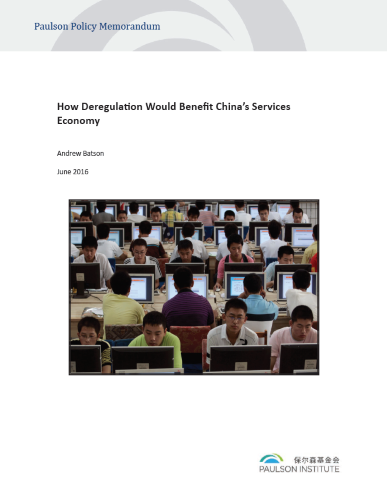I have a new paper out at the Paulson Institute, on China’s service sector. Obviously I would like people to read the whole thing, but here’s the short version:
The first part of the paper is a rather fun (for me anyway) piece of data work, comparing the development of China’s service sector over time with the patterns of Japan, South Korea, and Taiwan. The conclusion is that China’s “modern” service sector looks over-developed, while its household service sector looks under-developed. The over-development of modern services seems to caused mainly by a huge increase in the size of the financial sector, and therefore is not actually a cause for celebration. The under-development of household services suggests (though admittedly does not prove) that these sectors are being held back by high levels of state ownership and/or regulation. Therefore I argue that instead of doubling down on finance-driven growth, China would be better off liberalizing household and other service sectors.
In the second part I offer some suggestions on how to do this. My main idea is that China should make use of its well-developed planning institutions to drive liberalization. In simple terms, I propose that the Chinese government set quantitative targets for the market share of private companies in various sectors. This would make clear what the end goal of liberalization is, and impose accountability on officials for achieving that end goal–but it would also allow for flexibility in how the goal is reached. There is some precedent for this approach: in the twelfth five-year plan for the healthcare sector, the government set a target that private hospitals should account for 20% of hospital beds and service volume by 2015, and their market share did rise. Similar targets could work in other sectors. It’s worth a try, I think.
My thanks to Evan Feigenbaum and particularly Song Houze of the Paulson Institute for their help and comments on this paper, and I am also very pleased that the Institute’s resources allow the paper to be translated into Chinese.

